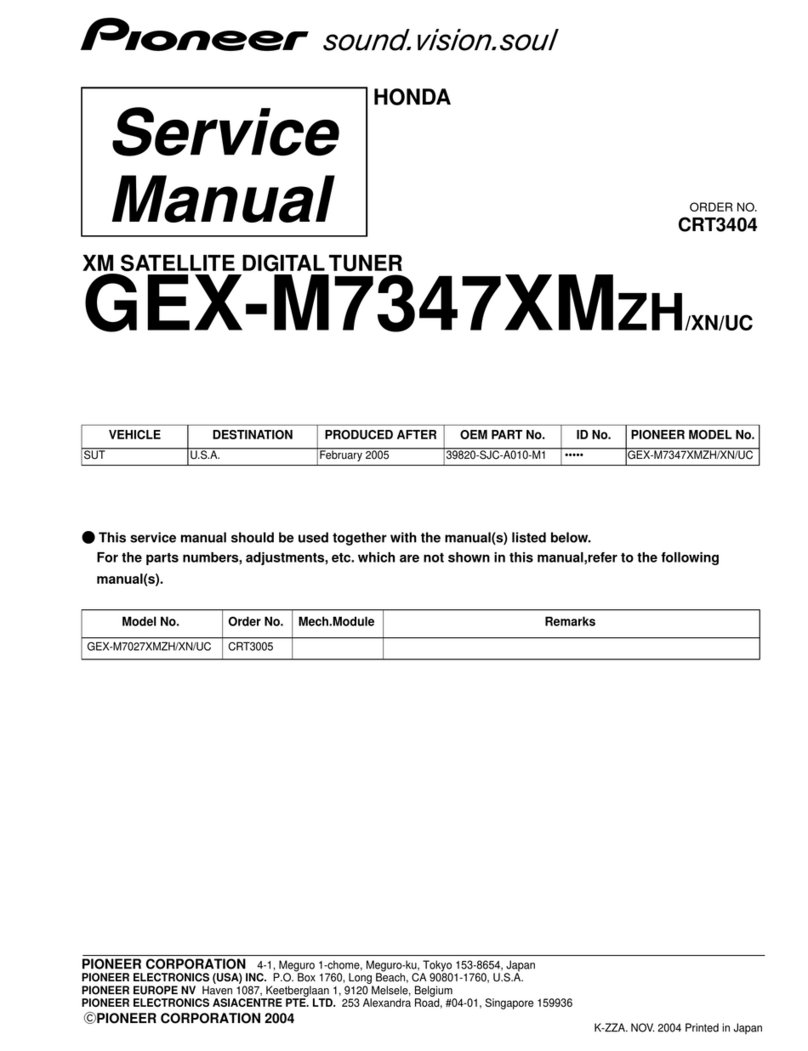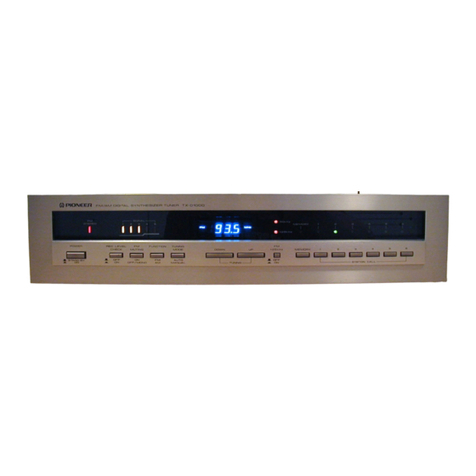Pioneer TX-1070L User manual
Other Pioneer Tuner manuals
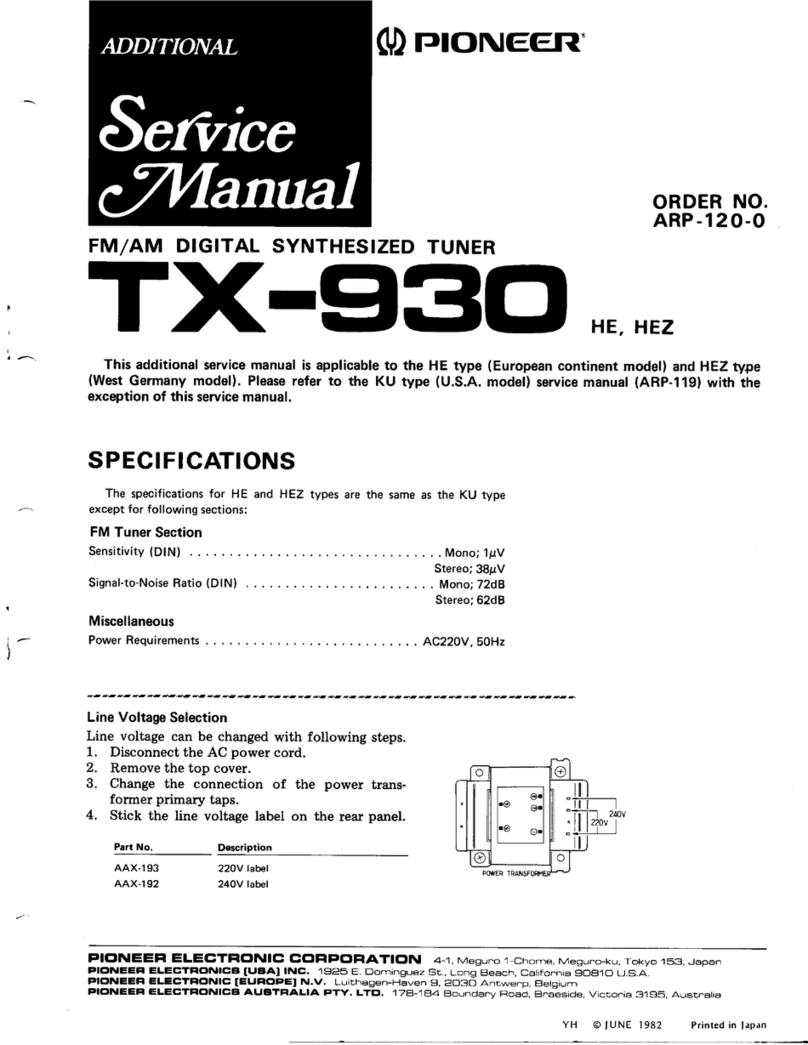
Pioneer
Pioneer TX-930 User manual

Pioneer
Pioneer ND-TMC10 User manual
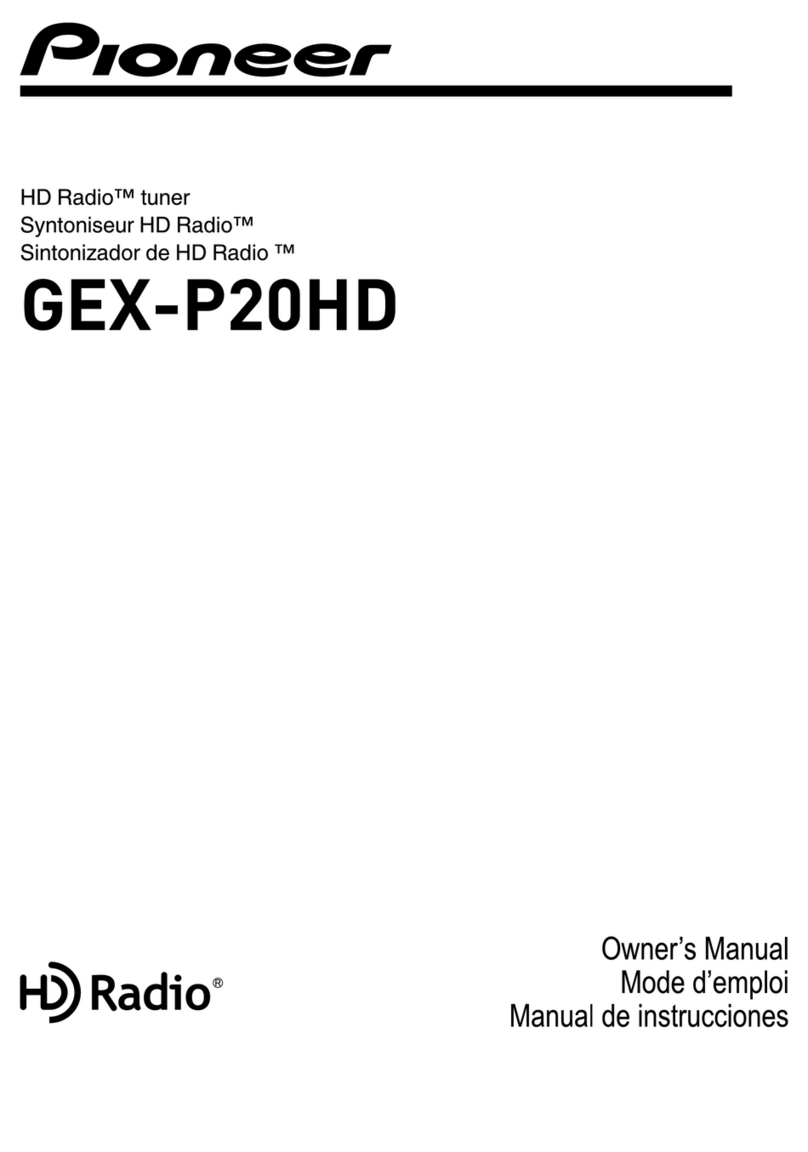
Pioneer
Pioneer GEX-P20HD - HD TUNER FOR READY HEADUNITS User manual
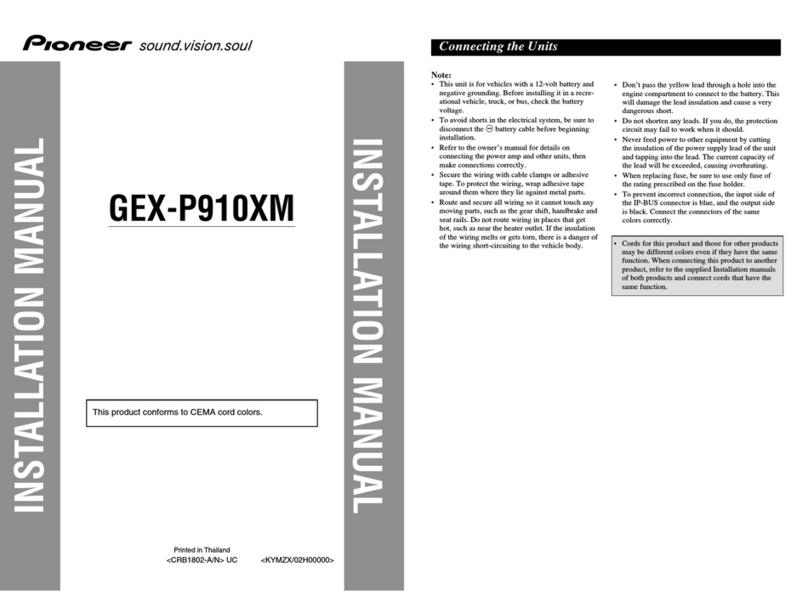
Pioneer
Pioneer GEX-P910XM User manual
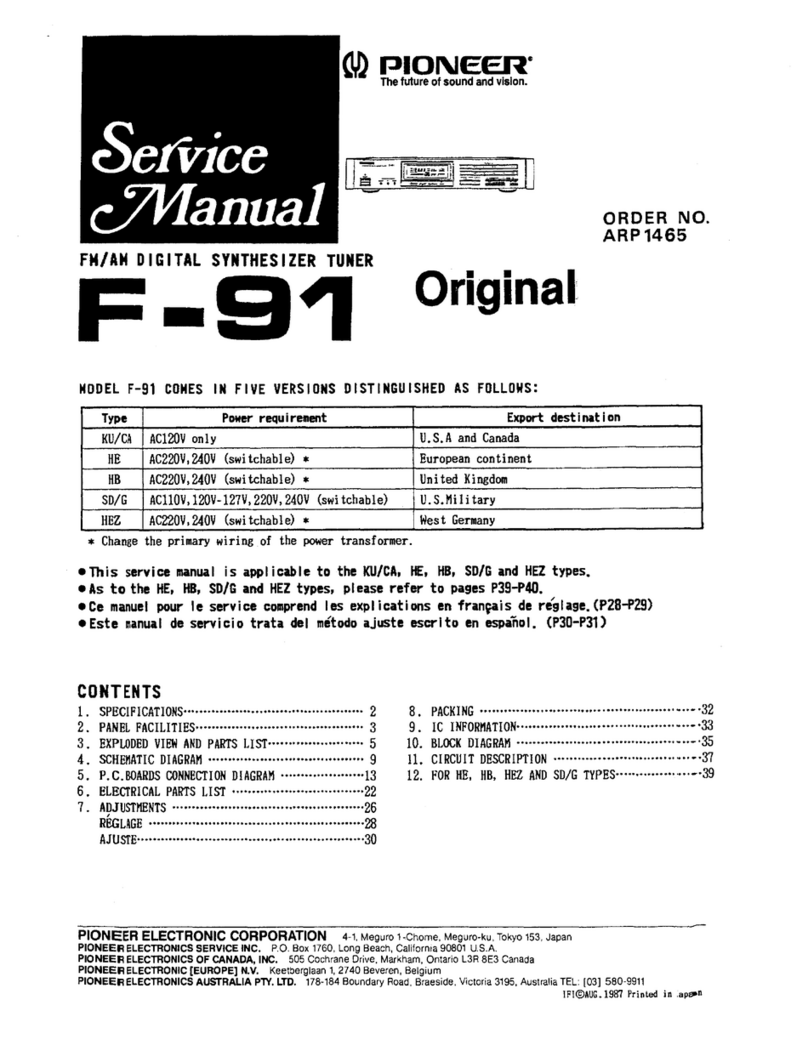
Pioneer
Pioneer F-91 User manual
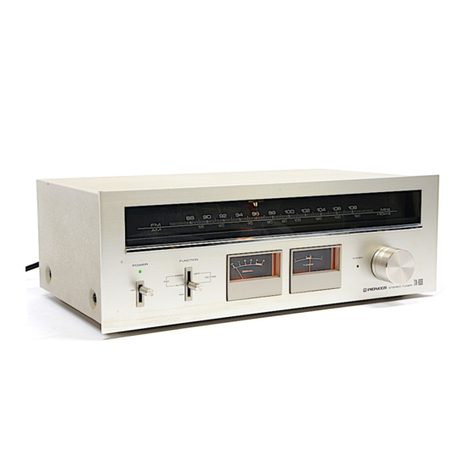
Pioneer
Pioneer TX-6700 User manual
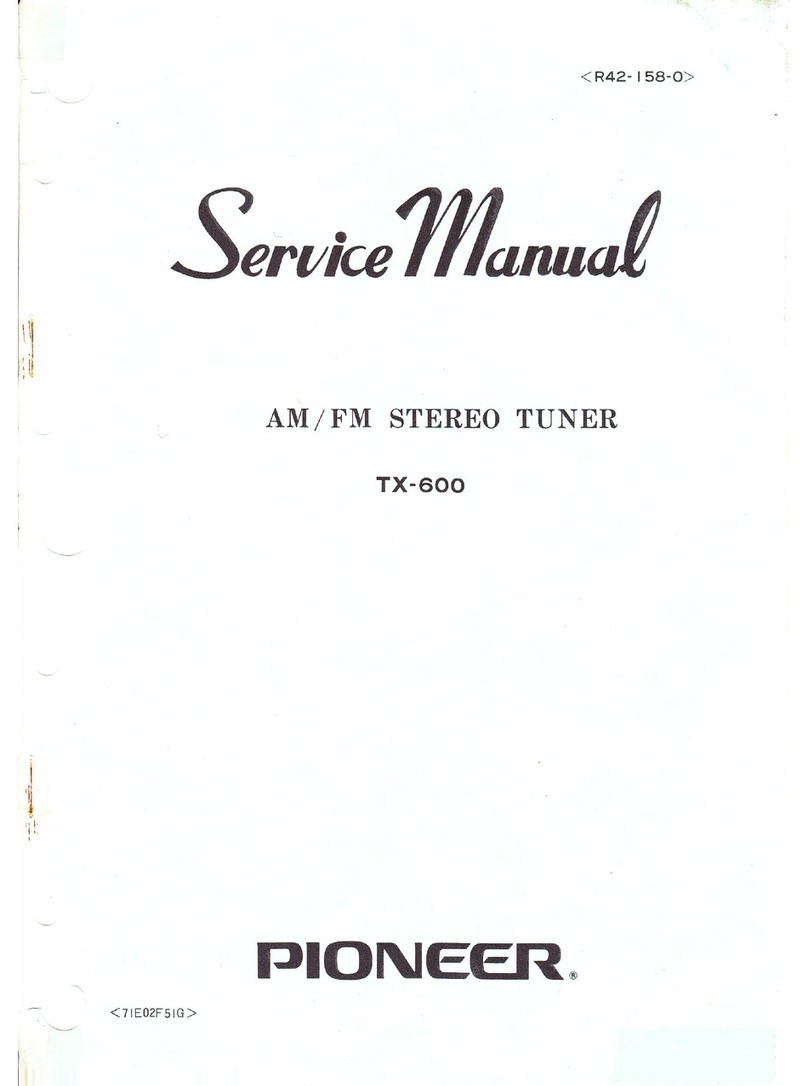
Pioneer
Pioneer TX-600 User manual
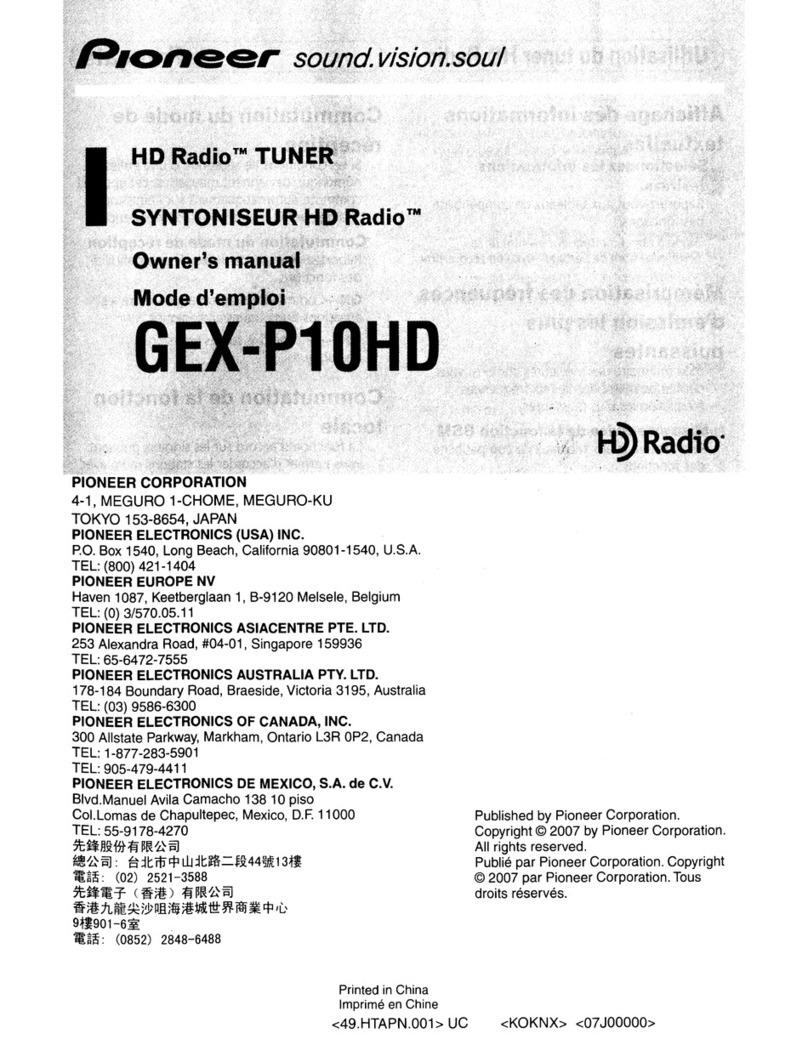
Pioneer
Pioneer GEX-P10HD - HD Radio Tuner User manual
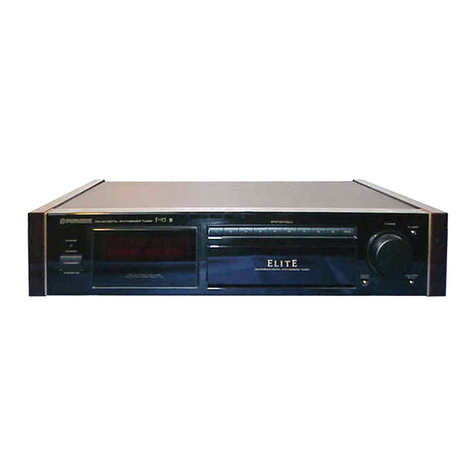
Pioneer
Pioneer F-93 User manual
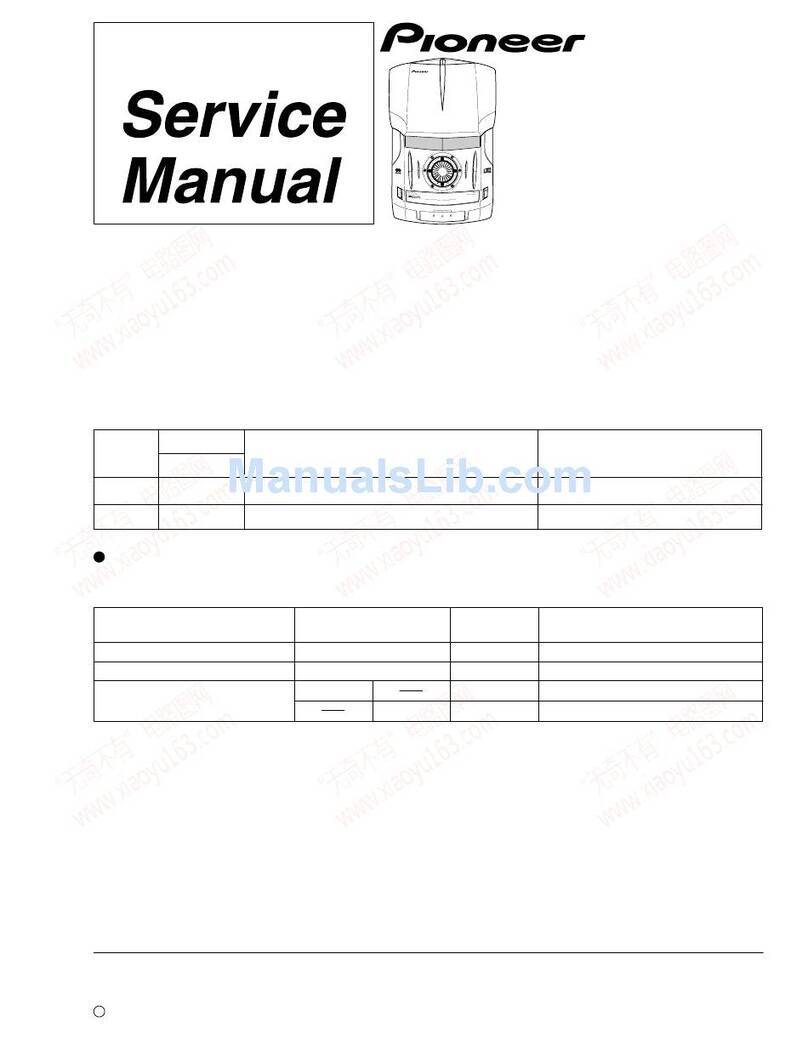
Pioneer
Pioneer XC-IS22CD User manual

Pioneer
Pioneer SH-DT510 User manual
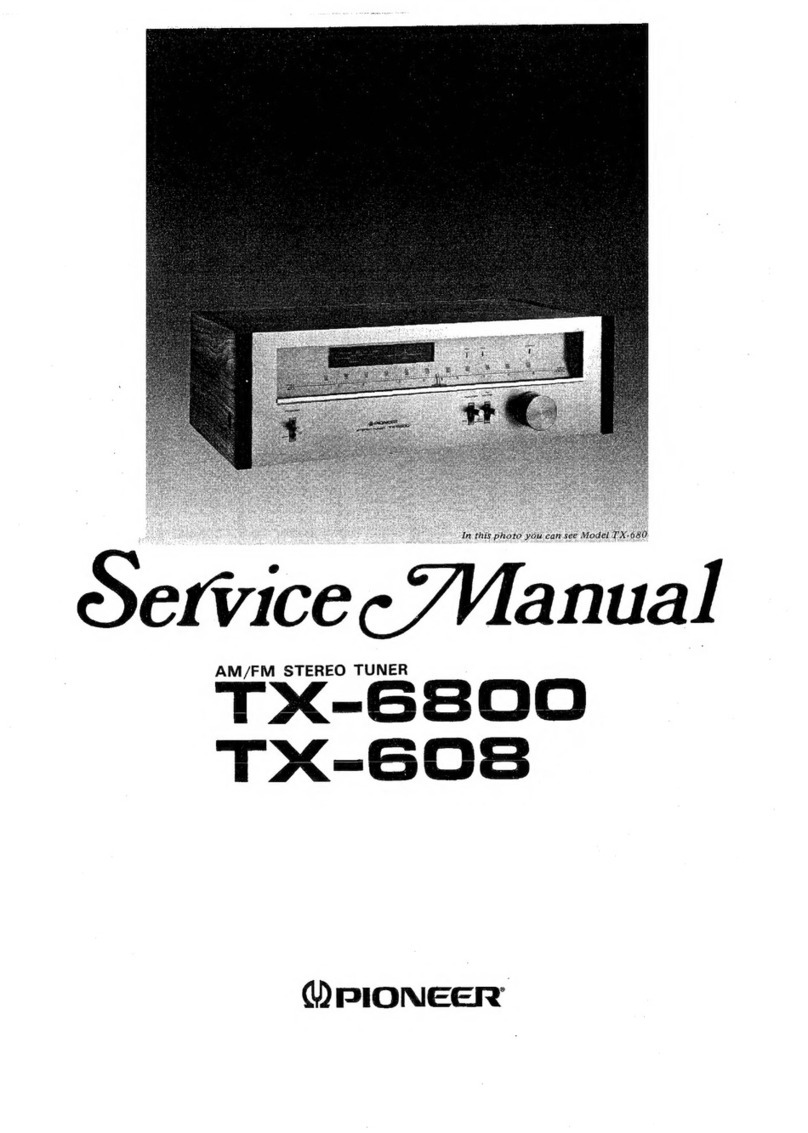
Pioneer
Pioneer TX-6800 User manual
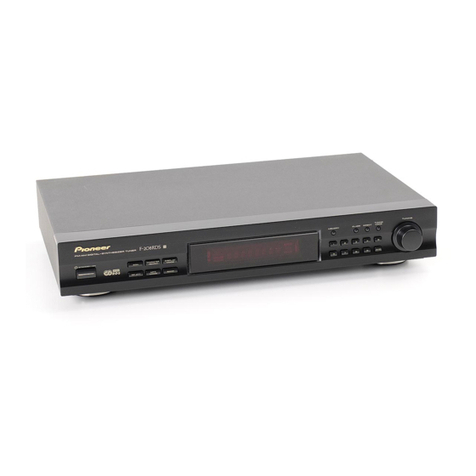
Pioneer
Pioneer F-208RDS User manual
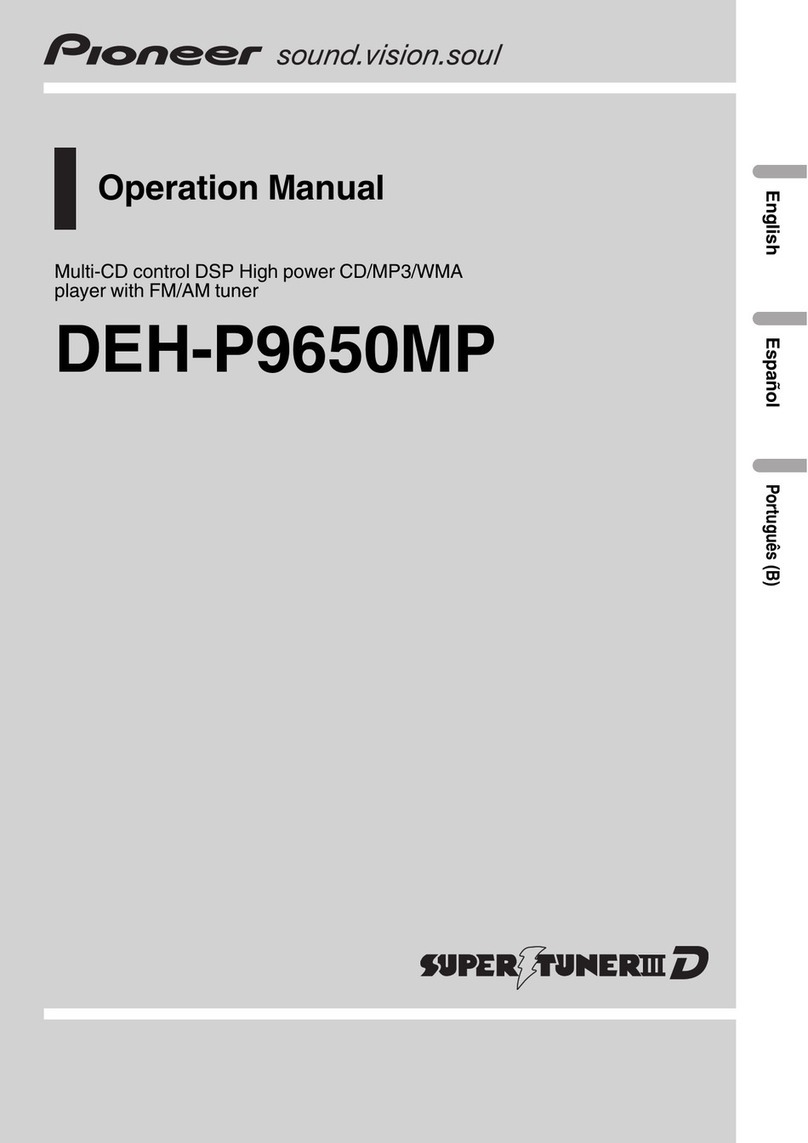
Pioneer
Pioneer DEH-P9650MP User manual
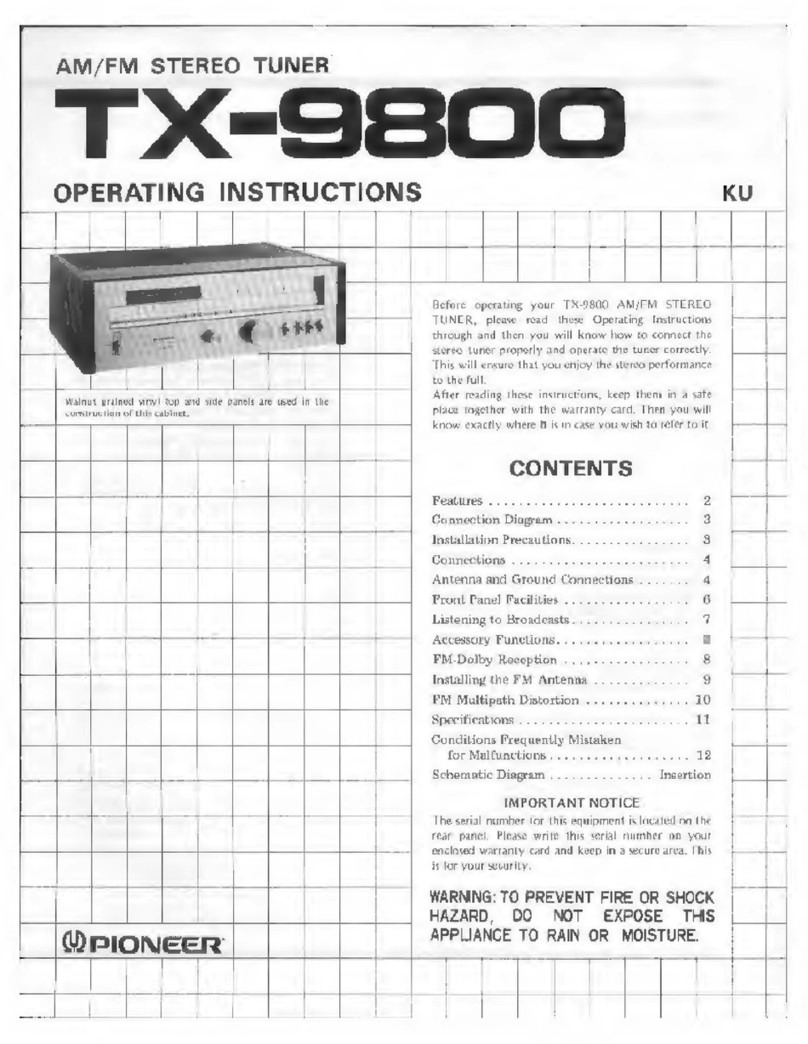
Pioneer
Pioneer TX-9800 User manual
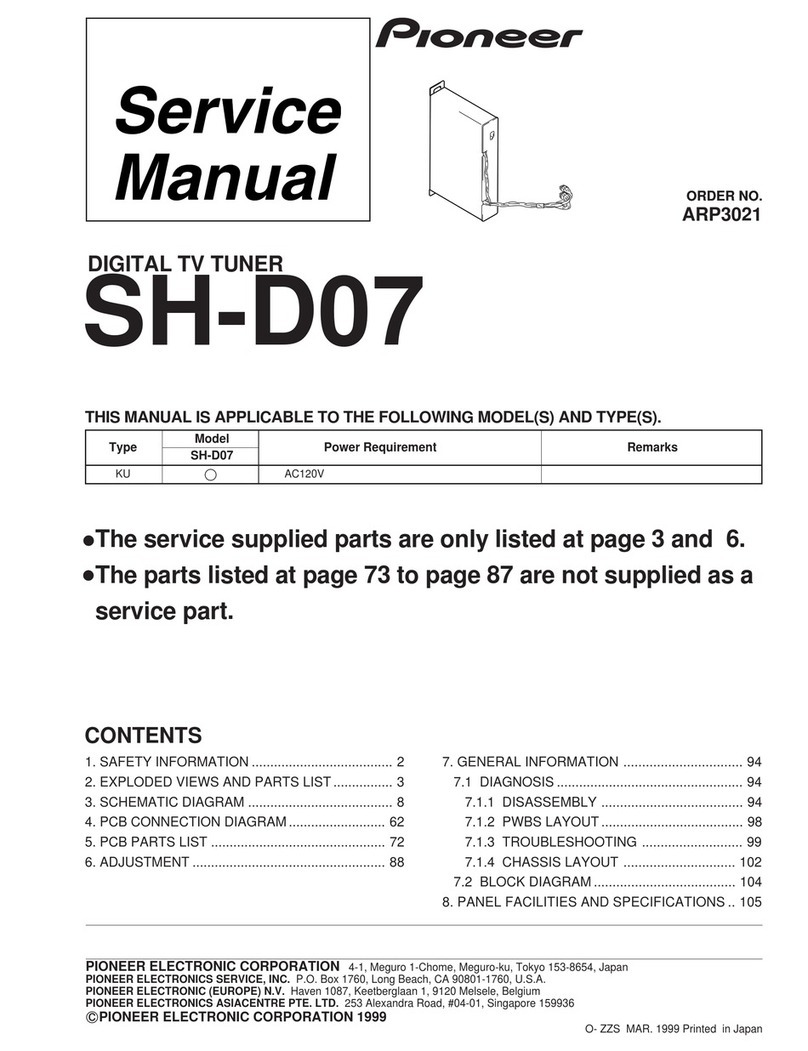
Pioneer
Pioneer SH-D07 User manual
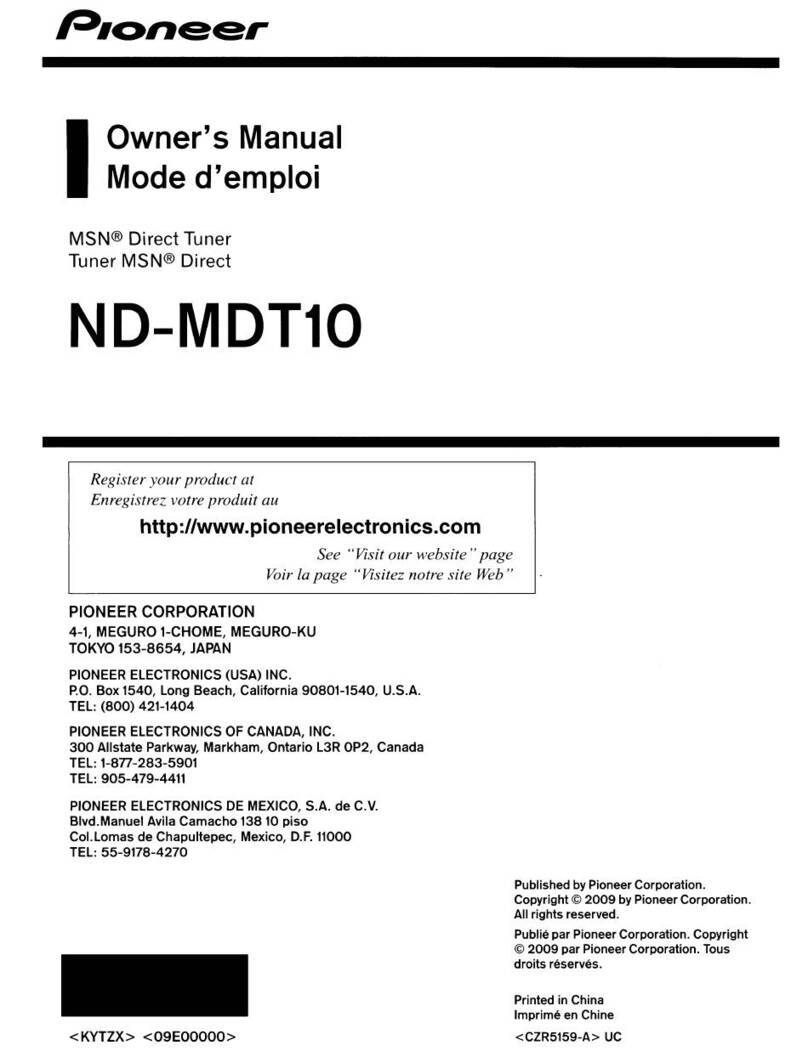
Pioneer
Pioneer ND-MDT10 User manual
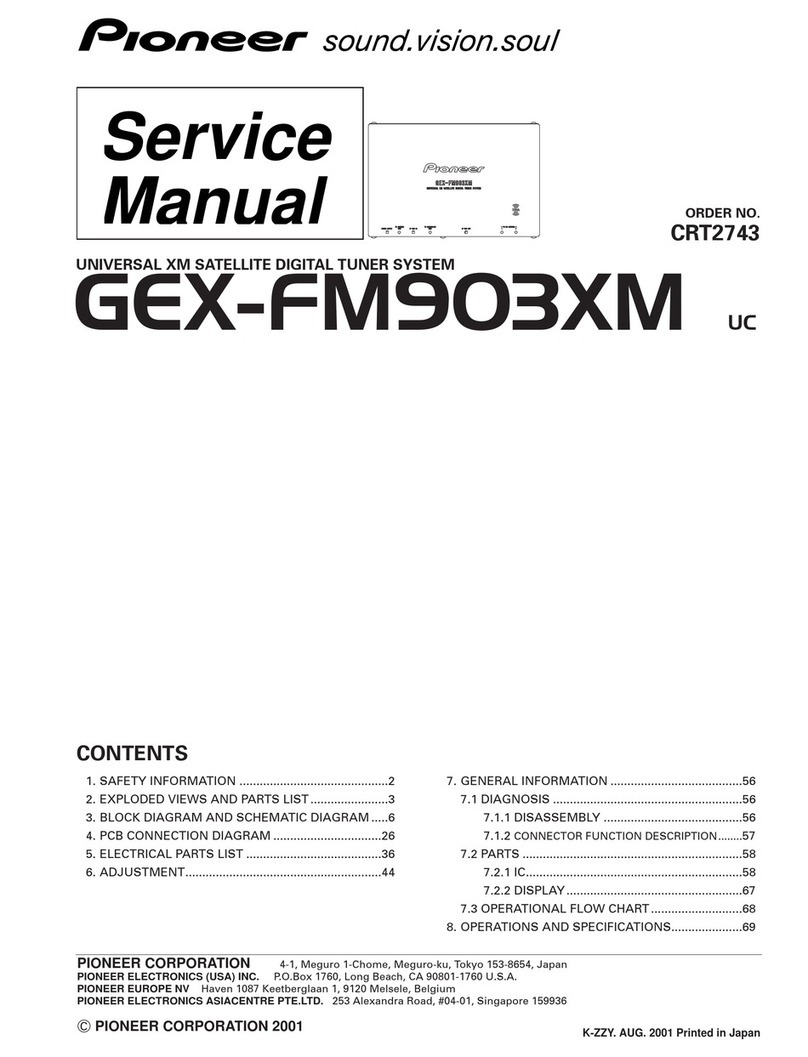
Pioneer
Pioneer GEX-FM903XM Building instructions
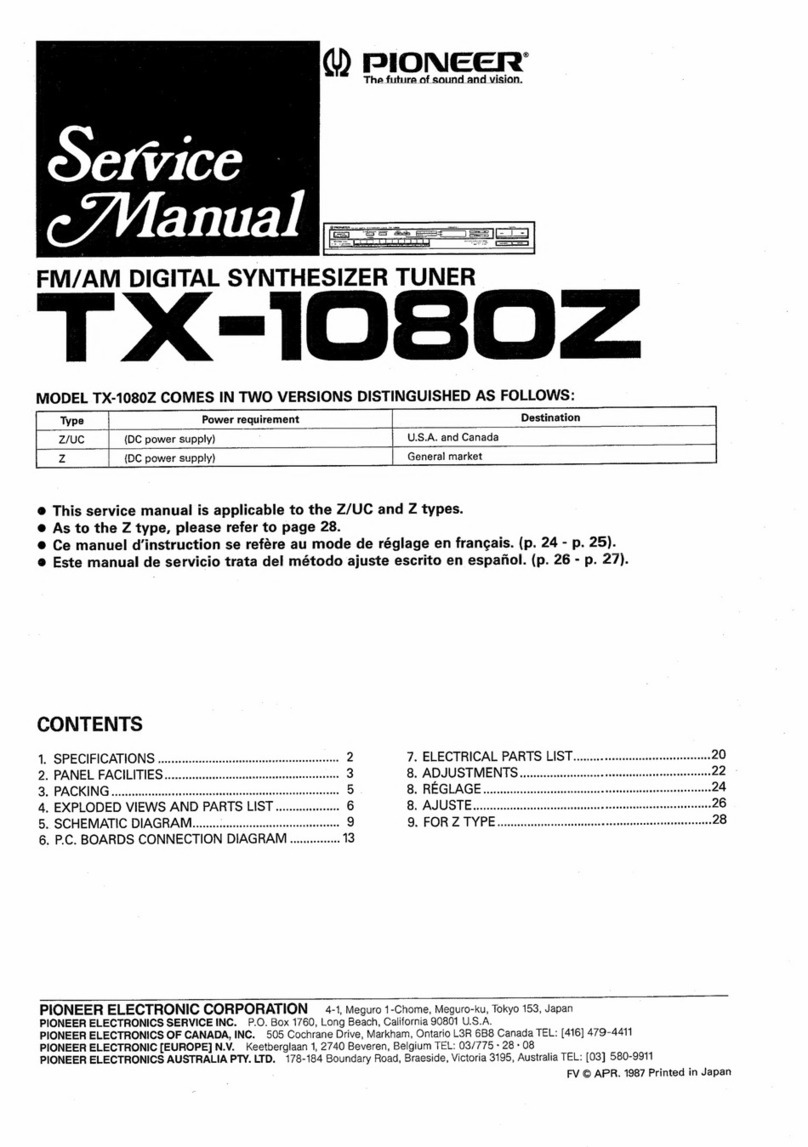
Pioneer
Pioneer TX-1080Z User manual
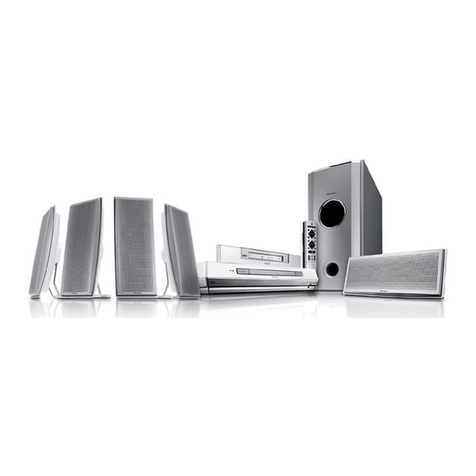
Pioneer
Pioneer S-DV99ST User manual
Popular Tuner manuals by other brands

NAD
NAD C 445 owner's manual

Sony
Sony ST-SA5ES operating instructions

Sirius Satellite Radio
Sirius Satellite Radio SC-FM1 user guide

Antique Automobile Radio
Antique Automobile Radio 283501B Installation and operating instructions

Sanyo
Sanyo FMT M15L Service manual

Monacor
Monacor PA-1200R instruction manual

